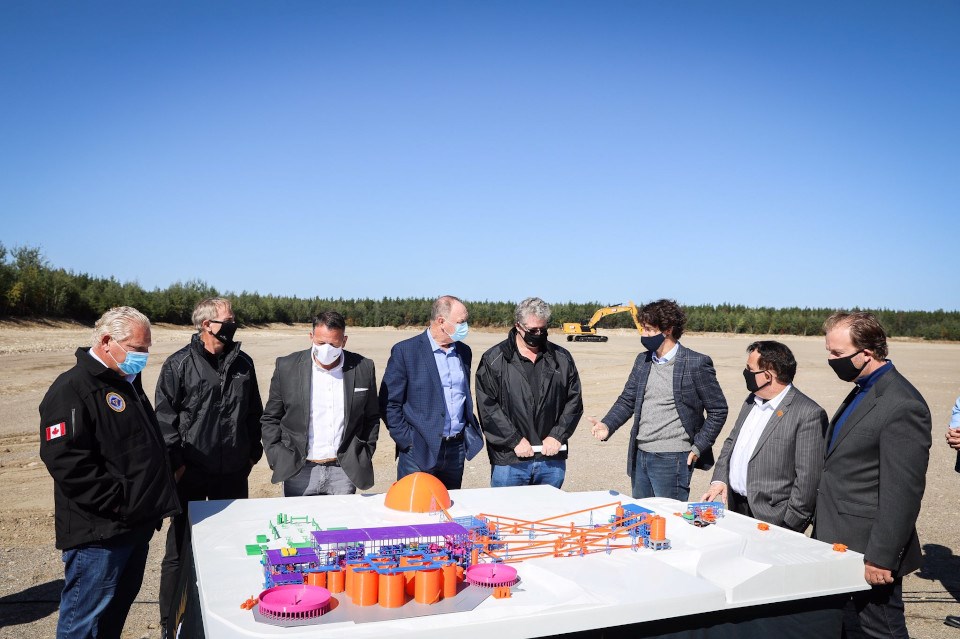Mining has a place in Justin Trudeau's green agenda in restoring Canada's economy.
The prime minister called IAMGOLD's Côté Gold Mine development "a model" for Indigenous engagement that Ottawa would like to see replicated across the country.
"This is part of reconciliation," said Trudeau during a Q & A with reporters at the Sept. 11 sod-turning for the mining company's $1.8-billion open-pit gold project outside Gogama.
Trudeau said the federal government is "very much focused" in investing in a mining sector that brings good jobs to communities, particularly First Nations.
"It's important that we do it with an eye to the future which means sustainablity and in partnership with Indigenous communities."
Want to read more stories about business in the North? Subscribe to our newsletter.
In his prepared remarks, Trudeau praised the Canadian mining industry for its innovation, mentioning Canada's first all-electric mine at Newmont’s Borden Gold Mine near Chapleau.
Tackling the global climate change problem, he said, can't be solved without strong leadership from the natural resource sector.
"Innovations across this sector will be crucial for a green recovery and will help drive the clean transition that we need."
He also acknowledged the industry's contribution to Canada's green-tech sectors.
"From the nickel and cobalt that are used in electric vehicles and solar panels, the mining sector is really important in building a better future for us all."
The Côté Gold Mine will provide an economic boon for mine-related businesses in Timmins and Sudbury. But it stands to be a life-changer for members of Flying Post and Mattagami First Nations.
The two communities signed an impact benefit agreement with IAMGOLD in 2019, the result of a long consultation and negotiation process that began when the company acquired the exploration property in 2012.
There will be employment opportunities for locals among the more than 1,000 contractors expected to be on site next summer, and the 450 operational jobs when commercial production begins in 2023.
Côté promises an initial mine life of 18 years and more than $5 billion in wages over that span.
Energy, Northern Development and Mines, and Indigenous Affairs Minister Greg Rickford reminded Trudeau and Premier Doug Ford that there could be more red letter days like this one in the Ring of Fire.
Rickford said mines like Côté provide "tremendous economic and social opportunities" as Canada moves into a period of economic recovery that can be continued by tapping into the "incredible potential" in the Far North.
"Instead of issues, it's about opportunities."
As with the Côté Mine and Harte Gold's Sugar Zone Mine, Rickford said progress in the Ring of Fire has been "burdened" by more than a decade of delays and bureaucracy.
But after two years, with access road environmental assessments underway, Rickford feels the province is making headway to advance the project.
"For the first time in a decade," said Rickford, glancing over his shoulder to a construction-prepped clearing behind him, "I believe there's a real opportunity we could be standing there, prime minister and premier, in a place just like this."
Despite growing Indigenous opposition by downstream communities, Rickford finds encouraging signals coming from Ottawa in a willingness to partner with Queen's Park to open up the mineral potential in the James Bay region.
He extended an offer for the feds to join Ontario in cost sharing on critical infrastructure that stands to benefit communities like Marten Falls and Webequie, and the entire region.
Rickford said it's possible for all levels of government to "overcome the issues, focus on opportunities to create something incredible like we're celebrating here today."




